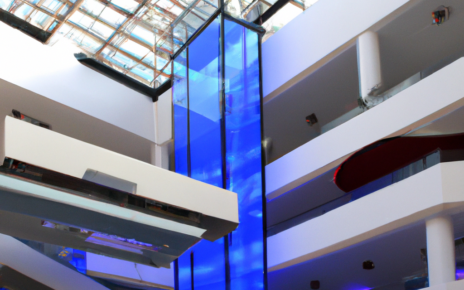From bustling marketplaces to cutting-edge shopping malls, the evolution of Melbourne’s shopping centers encapsulates the city’s growth and transformation over the years. As a dynamic urban hub, Melbourne has witnessed a remarkable journey of commercial spaces adapting to changing times and consumer needs. The historical evolution of Melbourne’s shopping centers is not just a testament to retail development but also reflects the city’s cultural, social, and architectural progress.
Early Marketplaces and Pedestrian Zones
The journey begins with the transformation of traditional markets into formal shopping areas. The shift from open-air markets to structured shopping streets brought about a new shopping experience. Suburban neighborhoods started to develop distinct shopping districts, each with its own charm and specialties. The introduction of pedestrian zones enhanced the shopping ambiance, allowing visitors to leisurely explore the offerings.

Rise of Department Stores
The iconic department stores of Melbourne played a pivotal role in shaping the city’s shopping culture. These grand establishments were more than just retail spaces; they were community landmarks. Stores like the Regent Arcade and Myer not only offered a wide array of products but also provided entertainment and a sense of elegance. The transition from small corner shops to large, multi-level stores marked a shift in shopping dynamics.
Shopping Malls and Modernization
The advent of shopping malls brought a new dimension to retail therapy. These enclosed spaces not only revolutionized shopping but also introduced a novel architectural concept. The incorporation of modern designs, innovative layouts, and the inclusion of entertainment and leisure facilities made shopping centers not just about commerce, but about creating an experience.
Suburban Shopping Centers
Melbourne’s urban sprawl gave rise to suburban shopping centers, altering the retail landscape. These centers catered to local communities, providing convenience and accessibility. Shopping was no longer limited to the central business district, making it an integral part of neighborhood life. This shift transformed the relationship between shoppers and retail spaces.
Technology and Online Shopping
As technology advanced, so did the way people shopped. The rise of e-commerce posed a challenge to traditional shopping centers, prompting them to adapt and innovate. Shopping centers incorporated technology-driven solutions like interactive displays, mobile apps, and online platforms to enhance the shopping journey, blurring the lines between physical and virtual retail.
Cultural and Social Hubs
Shopping centers in Melbourne evolved beyond commerce; they became cultural and social hubs. They embraced their roles as spaces for community engagement by hosting art exhibitions, cultural events, and performances. These centers not only fulfilled shopping needs but also fostered a sense of belonging and cultural identity.
Sustainable and Green Shopping Centers
The increasing emphasis on environmental consciousness led to the emergence of sustainable and green shopping centers. Incorporating eco-friendly practices and design elements, these centers showcased a commitment to a greener future. The integration of green spaces, energy-efficient systems, and sustainable materials created harmonious environments for shoppers and nature.
Challenges Faced by Shopping Centers
The digital age presented challenges to traditional shopping centers. Online retailers offered convenience and variety, altering consumer expectations. Shopping centers needed to reinvent themselves by offering unique experiences, exclusive offerings, and personalized services to remain competitive in a changing landscape.
Architectural Marvels and Iconic Designs
Some shopping centers transcended functionality to become architectural marvels. Designs that balanced aesthetics with functionality became landmarks themselves. Centers like Emporium Melbourne and Chadstone Shopping Centre showcased intricate designs that not only facilitated shopping but also celebrated the art of architecture.
Future Trends and Innovations
The future promises exciting developments in the realm of shopping centers. Augmented reality, personalized experiences, and immersive technologies are expected to redefine the shopping journey. The focus will be on creating seamless and memorable experiences that cater to individual preferences.
Adapting to Global Events
Shopping centers have displayed resilience in the face of global events. During the COVID-19 pandemic, they adapted swiftly by implementing safety measures, offering online shopping options, and reimagining spaces for social distancing. This adaptability highlighted their importance as flexible and responsive urban entities.
Preserving Historical and Cultural Identity
While embracing modernity, shopping centers also aimed to preserve historical and cultural elements. Incorporating local culture and traditions enriched the shopping experience, making it a unique blend of the contemporary and the traditional.
Consumer Experience and Engagement
The focus shifted to enhancing consumer experiences. Shopping centers incorporated sensory elements like ambient lighting, soothing sounds, and captivating aromas to evoke emotions and create lasting memories. The objective was not just to sell products, but to provide an immersive and emotional journey.
Conclusion
Melbourne’s shopping centers have evolved from humble marketplaces to multifaceted spaces that reflect the city’s progress. As they continue to adapt to changing times, they bridge the gap between commerce, culture, and community. By embracing the lessons of the past while innovating for the future, Melbourne’s shopping centers stand as vibrant testaments to urban evolution.



